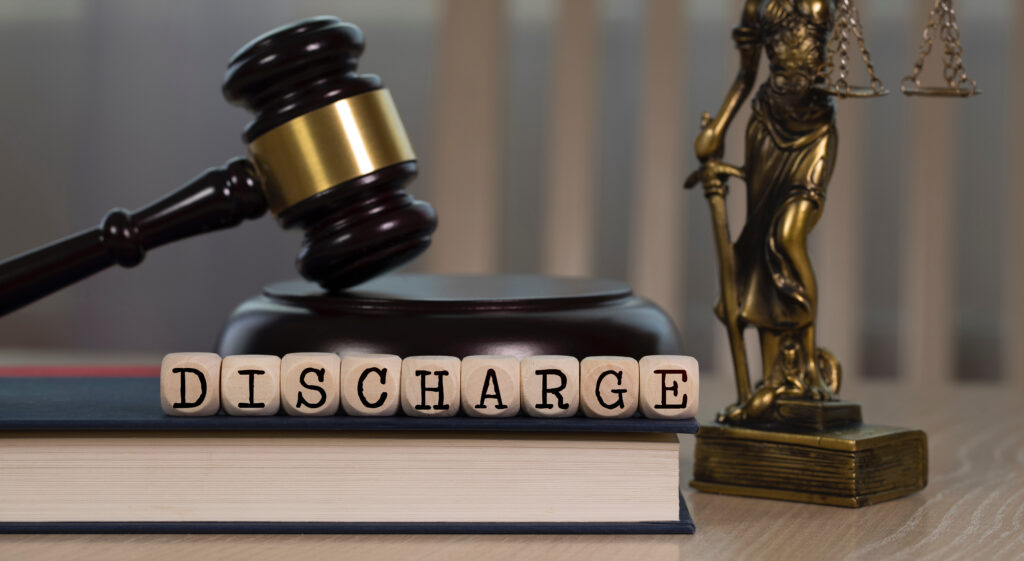
Holding a Creditor Liable for Violations of the Discharge Injunction
The discharge has long been an important feature of American bankruptcy law. The discharge is automatic and self-effectuating. Creditors must obey it, even if debtors do not assert it. See Pavelich v. McCormick, Barstow, Sheppard, Wayte & Carruth LLP (In re Pavelich), 229 B.R. 777, 781–82 (9th Cir. BAP 1999). The discharge prohibits not just litigation, but also informal collection activities, such as dunning notices and telephone calls. See In re Feldmeier, 335 B.R. 807, 813 (Bankr. D. Or. 2005) (“Among the collection activity prohibited by the discharge injunction are ‘telephone calls, letters, and personal contacts.’ ” (citation omitted)). Violations of the discharge injunction by a creditor can subject that creditor to damages and sanctions.
The discharge has one important limit: it bars only efforts to collect debts “as a personal liability of the debtor.” 11 U.S.C. § 524(a)(2). This means that secured creditors can foreclose their liens after the discharge is entered. Johnson v. Home State Bank, 501 U.S. 78, 83, 111 S.Ct. 2150, 115 L.Ed.2d 66 (1991) (explaining that a discharge extinguishes only the personal liability of the debtor, and that a creditor’s right to foreclose on a mortgage survives the bankruptcy).
This creates a particular issue in the case of the lienholder after a discharge. While the discharge generally prohibits creditors from communicating with discharged debtors in an effort to extract payment, lienholders usually must communicate with debtors in order to enforce their lien rights. The Ninth Circuit Bankruptcy Appellate Court has recognized that the way to reconcile this tension is “to hold that a lienholder may communicate with a discharged debtor only to the extent necessary to preserve or enforce its lien rights, and may not attempt to induce the debtor to pay the debt.” Nash v. Clark Cty. Dist. Atty’s Office (In re Nash), 464 B.R. 874, 881 (9th Cir. BAP 2012); see also United States v. Holmes (In re Holmes), BAP No. CC-94-2001-HMV, 76 A.F.T.R.2d 95-7925, 1995 WL 800102 (9th Cir. BAP 1995) (“A secured creditor cannot, under the guise of enforcing an unavoided lien, attempt to coerce the debtor into paying a discharged debt…. Even if a creditor threatens only to enforce its surviving lien, that threat will violate the discharge injunction if the evidence shows that the threat is really an effort to coerce payment of the underlying discharged debt.” (citations omitted)).
In 2019, the U.S. Supreme Court evaluated the split in the Circuit courts related to standard for holding a creditor in contempt for violation of a discharge injunction. See Taggart v. Lorenzen (In re Taggart), 139 S. Ct. 1795, 1799 (June 3, 2019). Prior to the Taggert opinion, the majority of courts treated violations of a discharge order close to strict liability. As long as a creditor acted deliberately, with knowledge of the bankruptcy case, civil sanctions could be appropriate. A subjective belief that an action was exempt from the bankruptcy discharge would not insulate a creditor from civil contempt. A minority of circuits followed a more lenient, subjective standard wherein a creditor would not be held in civil contempt simply by establishing that it had a good faith belief that the discharge order did not apply to its claim, even if this belief was unreasonable.
 In Taggart, the Supreme Court issued a unanimous decision establishing a “new” standard for holding a creditor in contempt for violation of a discharge injunction. Essentially, the Supreme Court ruled the standard civil contempt analysis applied in the bankruptcy context. Pursuant to Taggert, civil contempt “may be appropriate if there is no objectively reasonable basis for concluding that the creditor’s conduct might be lawful.”
In Taggart, the Supreme Court issued a unanimous decision establishing a “new” standard for holding a creditor in contempt for violation of a discharge injunction. Essentially, the Supreme Court ruled the standard civil contempt analysis applied in the bankruptcy context. Pursuant to Taggert, civil contempt “may be appropriate if there is no objectively reasonable basis for concluding that the creditor’s conduct might be lawful.”
In Taggart, the debtor was issued a discharge order and like many such orders, the discharge order goes no further than the statute, stating that the debtor “shall be granted a discharge under § 727.” Id at 1799; see also United States Courts, Order of Discharge: Official Form 318. Thereafter, a prepetition lawsuit for injunctive relief resumed. Id. at 1800. The creditor was successful in the injunctive relief lawsuit and proceeded to file an action to recover its post-petition attorney fees. The state court held that the discharge injunction did not apply to this debt and granted plaintiff’s post-petition attorney fees applying the Ninth Circuit’s decision in In re Ybarra, 424 F.3d 1018 (9th Cir. 2005).1 The debtor reopened the bankruptcy action and filed a motion for contempt for violation of the discharge order. Taggert at 1800. Initially, the bankruptcy court affirmed the state court’s decision, however, the debtor appealed to federal district court which held that the debtor had not “returned to the fray” in the post-petition injunction action. On remand and given the federal district court’s finding, the bankruptcy court entered an order for contempt and sanctions for violation of discharge against the creditor and applied a standard akin to a strict liability analysis.
On appeal, the debtor argued that the creditor was in violation of the discharge injunction because it was “aware of the discharge” and “intended the action.” Id. at 1803. The Ninth Circuit disagreed because creditor was advised by the state court that the discharge did not apply to collection of the post-petition attorney fees and therefore had a “good faith belief” that the discharge injunction did not apply to its action. The Ninth Circuit utilized a subjective standard used in a minority of circuits. Id. The debtor appealed to the Supreme Court. Id. at 1801.
In analyzing the two standards, the Supreme Court found that both standards were problematic in that the strict liability standard could lead to sanctions in cases even with a cautious creditor with a reasonable belief that the discharge was not applicable (i.e. a lower court opinion). Alternately, the subjective standard would rely too heavily on “difficult to prove states of mind” leading to costly litigation for both creditors and debtors. In an attempt to create a balanced standard, the Supreme Court examined the traditional principles that govern civil contempt and determined that the proper standard is an objective one. Specifically, a court may hold a creditor in civil contempt for violating a discharge order where there is not a “fair ground of doubt” as to whether the creditor’s conduct might be lawful under the discharge order. Id. at 1799 and 1804.
The Taggert Court recognized that the Code specifies that “a discharge order ‘operates as an injunction,’ § 524(a)(2), and that a court may issue any ‘order’ or ‘judgment’ that is ‘necessary or appropriate’ to ‘carry out’ other bankruptcy provisions, § 105(a).” Id. at 1801. The Supreme Court recognized that,
Under traditional principles of equity practice, courts have long imposed civil contempt sanctions to “coerce the defendant into compliance” with an injunction or “compensate the complainant for losses” stemming from the defendant’s noncompliance with an injunction.
Id. at 1801 (citing United States v. Mine Workers, 330 U.S. 258, 303-304, 67 S.Ct. 677, 91 S.Ct. 884 (1947); D. Dobbs & C. Roberts, Law of Remedies § 2.8, p. 132 (3d ed. 2018); J. High, Law of Injunctions § 1449, p. 940 (2d ed. 1880)).
 The Supreme Court recognized that civil contempt sanctions may be warranted when a party acts in bad faith. See id. at 1801 (citing Chambers v. NASCO, Inc., 501 U.S. 32, 50, 111 S.Ct. 2123, 115 L.Ed.2d 27 (1991)). The Supreme Court also recognized that a party’s “record of continuing and persistent violations” and “persistent contumacy” justified placing “the burden of any uncertainty in the decree … on [the] shoulders” of the party who violated the court order. Id. The Court held that traditional civil contempt principles apply straightforwardly to the bankruptcy discharge context. Id. Under the “fair ground of doubt” standard, the Taggert Court reasoned that civil contempt may be appropriate when the creditor violates a discharge order based on an objectively unreasonable understanding of the discharge order or the statutes that govern its scope. Id. at 1802.
The Supreme Court recognized that civil contempt sanctions may be warranted when a party acts in bad faith. See id. at 1801 (citing Chambers v. NASCO, Inc., 501 U.S. 32, 50, 111 S.Ct. 2123, 115 L.Ed.2d 27 (1991)). The Supreme Court also recognized that a party’s “record of continuing and persistent violations” and “persistent contumacy” justified placing “the burden of any uncertainty in the decree … on [the] shoulders” of the party who violated the court order. Id. The Court held that traditional civil contempt principles apply straightforwardly to the bankruptcy discharge context. Id. Under the “fair ground of doubt” standard, the Taggert Court reasoned that civil contempt may be appropriate when the creditor violates a discharge order based on an objectively unreasonable understanding of the discharge order or the statutes that govern its scope. Id. at 1802.
Therefore, pursuant to Taggert, bankruptcy courts must first determine whether the creditor violated a discharge order and then determine whether the violation of the discharge order was based on an objectively unreasonable understanding of the discharge order or the statutes that govern its scope. Taggert at 1802. In such a case, civil contempt sanctions may be appropriate. Id. at 1799. If the court determines that the creditor (a) violated the discharge order and (b) that the creditor’s actions were objectively unreasonable, the court may then take a party’s good faith into consideration in determining an appropriate sanction. Id. at1802. Conversely, where the court determines that the creditor (a) violated the discharge order and (b) that the creditor’s actions were objectively unreasonable, a party’s “record of continuing and persistent violations” and “persistent contumacy” can also be taken into consideration in determining appropriate sanctions.
Even two years after the Supreme Court decision, many bankruptcy practitioners are not citing to the Taggart standard in pursuing or evaluating violations of the discharge injunction. This standard should be kept in mind when clients continue receiving notices after discharge from creditors. Debtor attorneys should make multiple written attempts to demand a cessation of any inappropriate attempts to collect a debt after a discharge and creditor counsel should be aware of the Taggert standard and counsel their clients against repeated and persistent post-discharge communications with debtors.

Leave a Comment